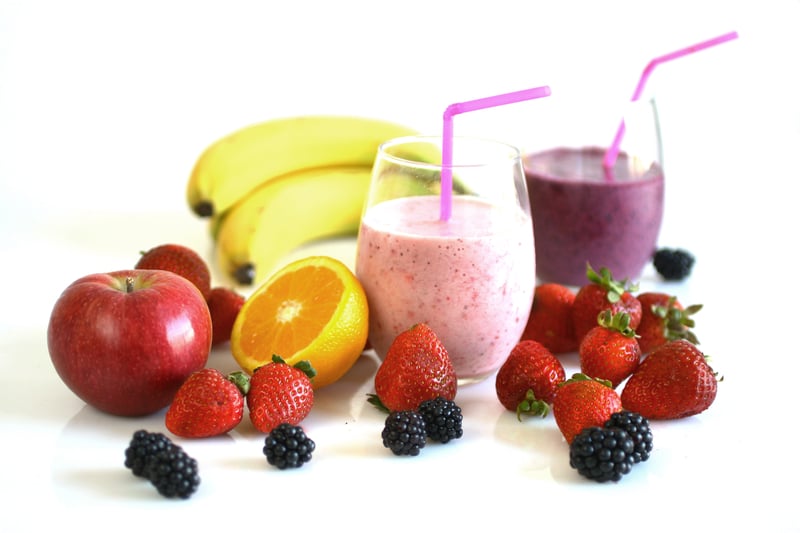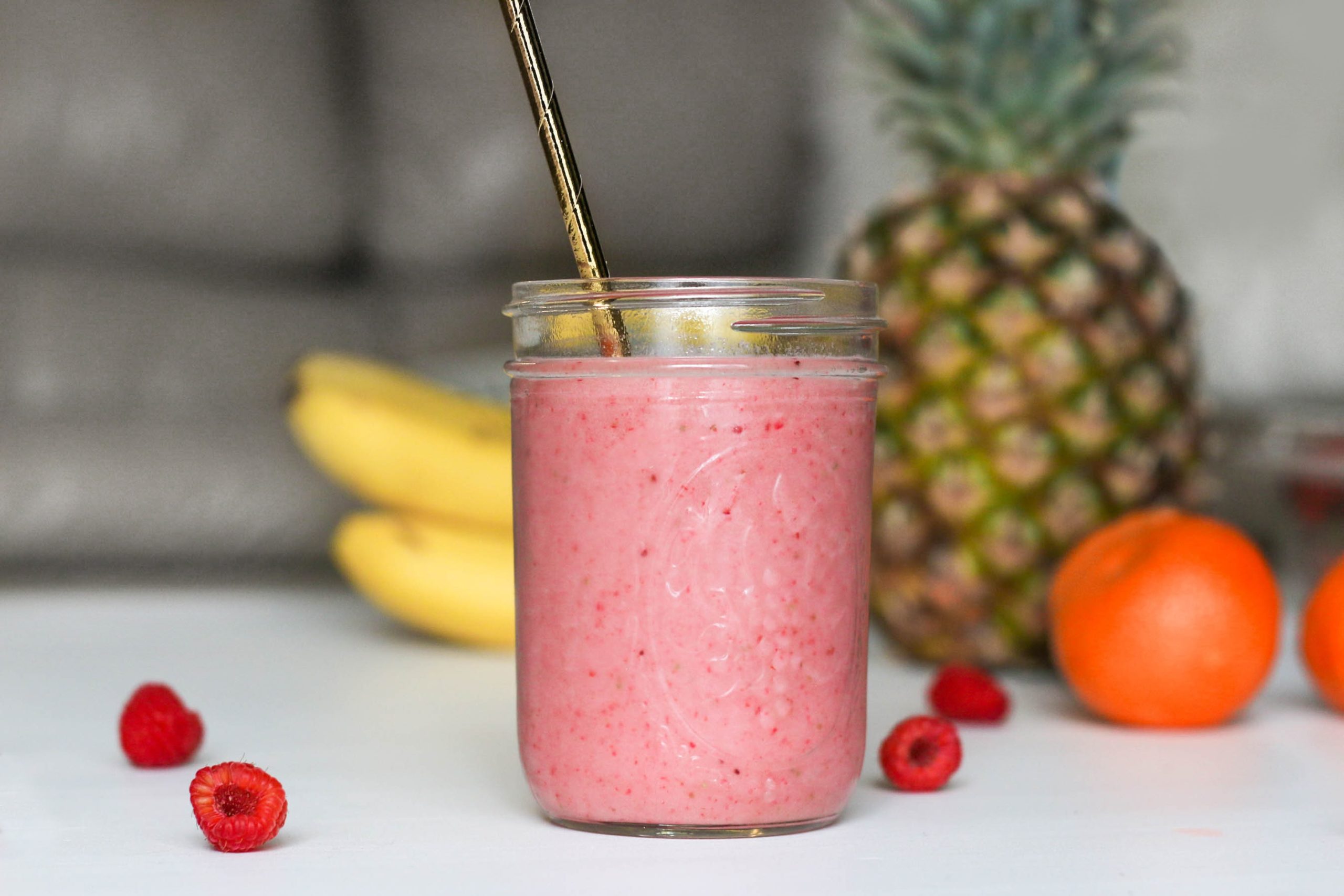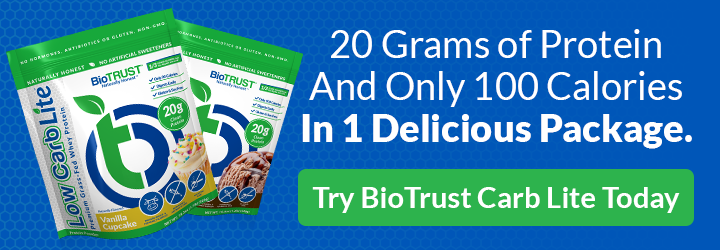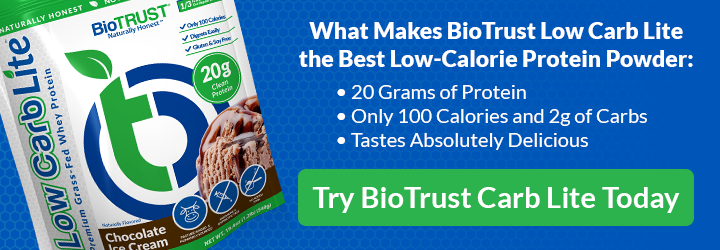You’ve Been Making Your Healthy Smoothies All Wrong…

Smoothies are quick, convenient, versatile, and packed with nutrients. And while in most areas, it’s easy to track down a grab-and-go smoothie nearly any time of day, consistently buying healthy smoothies to fuel your daily hustle can be costly. Conveniently, there’s no easier way to save some of that extra money you would be spending on a smoothie than to make it at home. But if you’re like me, you’ve found yourself believing some smoothies simply taste better when bought elsewhere.
At first, I thought this idea must just be in my head. Really, how could a smoothie made with the exact same ingredients taste different depending on if I bought it or if I made it at home? Could it be I think it just tastes better because I didn’t have to make it and dirty my blender? But even in side-by-side taste tests, some smoothies are objectively better than others. There has to be an explanation for this.
And in fact, there is: some of us have been making our healthy smoothies all wrong.
Yes, many smoothie recipes seem straightforward enough, whether you’re making a nutrient-dense meal replacement, a protein-packed workout booster, or a sweet treat, simply add all your ingredient to a blender and blend for a few seconds to a few minutes until smooth. And while you may have perfected your favorite smoothie recipes, what may be missing is your smoothie technique. By this, I mean the steps it takes to create the most desirable consistency, texture, and flavor for your smoothie. And after some smoothie sleuthing, I have come to realize many of us could be making some common detrimental smoothie-making mistakes.
7 Common Smoothie Errors

Now before we dig into the secret formula to create the best smoothie possible, let’s first go over some common smoothie mishaps and how to recover from them. Odds are, if you have attempted any at-home smoothie recipe, you may have run into at least one of these problems…
1. Too Thick
The key to a good smoothie is achieving the optimal consistency. It should be thicker than a juice but thin enough to easily drink through a straw without feeling like you are going to compress a lung (if you know, you know). If you have run across a smoothie being too thick, there are two easy options moving forward.
Option one: you can forget the cup and instead opt for constructing a smoothie bowl. Smoothie bowls are great if you have a little more time to sit down and feel like you are having a meal. They are layered with colors and textures and can even serve as creative works of art since the finished product is often very visually appealing, not to mention tasty!
Option two: if you prefer to stick to the original plan of a drinkable smoothie, the obvious move is to add more liquid. The answer, however, is not to just add any liquid. Adding water may dilute the smoothie, whereas milk or any other creamy liquid might change or dull the flavors. Instead, add in your liquid of choice in very small amounts. But, also make sure you have additional ingredients available in case the flavors shift and you need to adjust.
2. Too Watery
On the opposite end of the spectrum is a smoothie that’s too watery or runny. If this is the case, the easiest fix is to add more fruit, preferably frozen, or something to boost the creaminess. Some great choices include a small dab of nut butter or tahini, some oats, a couple of scoops of yogurt, a quarter of an avocado, or even some cooked sweet potato.
3. Too Gritty
For a long time, the first thing I would think of when it comes to protein shakes was grittiness. It wasn’t until years later I realized this all had to do with the type of protein that was being used. In reality, good protein smoothies don’t have any grittiness at all (BioTRUST protein for the win). But this can just be one of several reasons why a smoothie can turn out gritty.
If you find yourself with an unpleasantly gritty smoothie, there are several things you can try to revive it. One trick would be to add extra creaminess to the smoothie. By creating a creamier base, you can hopefully achieve a smoother texture. If this doesn’t work, another option is to pour the smoothie through a fine-mesh sieve or a cheesecloth. By doing this, you are guaranteed to achieve a super-smooth texture. However, if your smoothie is chunkier, you could be straining out some key ingredients.
4. Too Foamy
Along the same lines of unpleasant textures, another undesirable feature a smoothie can develop is foam. Occasionally, foam can form at the top of a smoothie, making for an odd and unappealing texture. If you notice a foam building on top of your smoothie, try slowing down the speed of your blender for about 10 – 20 seconds. If it persists, try stopping the blender and mixing the smoothie with a spoon. This should break up the foam as well as stir it back into the smoothie. As a last resort, if the foam still occurs, you can pour the smoothie into a cup and use a spoon or spatula to hold the foam back.
5. Too Bland
Smoothies should not only be nutrient powerhouses, they should also be delicious. Although you would expect all smoothies to be full of zest with all the ingredients that can go into them, many times a smoothie can turn out very one-note or lacking any flavor at all. When concocting your smoothie, don’t be afraid to get creative. Some great flavor additions include ginger, mint, cinnamon, dates, nut butter, or maybe a splash of juice.
6. Too Strong
Depending on what type of ingredients you are including in your smoothie, some ingredients can take over and overpower everything else. For instance, maybe your smoothies taste too healthy from the addition of too many greens. In this case, you can try to mellow out the flavor by adding some additional milk or fruit.
7. Too Chunky
Lastly, among the most common mistakes is creating a smoothie that’s too chunky. Maybe your ice didn’t get as pulverized as you would like, leaving you little ice chunks. Or maybe you’re still finding pieces of fruit getting stuck in your straw.
Whatever it may be, an overly chunky consistency can take away from the ease and enjoyment of drinking a smoothie. Ultimately, this is commonly chalked up to not having a good enough blender. As a result, this would be one of the major reasons many opt for going out and buying a smoothie. But as it turns out, this has less to do with your blender and more to do with how you are constructing your smoothie. Which now leads us right into the correct way to make a delicious, healthy smoothie.
RELATED: Collagen Doesn’t Work (Unless…)
How to Make Your Best Smoothies Yet
Step 1: Add Liquid
When making the perfect smoothie, it is recommended you add the liquid first. This is because the spinning of the blades creates a vortex, which sucks denser ingredients down.
Step 2: Add Powders
To the liquid, add any type of powder you may be using, such as protein powder, boosters, peanut butter, or cacao powder. It’s important to ensure these ingredients are well-blended, and in the cases of any powders, totally dissolved into the smoothie.
Step 3: Toss in Your Greens
Next, add in the leafy greens. Ensuring greens, such as spinach or kale, are near the bottom allows them to blend well. Also, remember to remove any ribs or woody stems. If your greens are still not blended enough, you can pulverize them in the liquid before adding any other ingredients.
Step 4: Fill in with Fruit
The fourth layer is when you can begin adding in the fruit. When doing this, add the softer fruits in first, like berries, bananas, and peaches, and harder (but not frozen) fruits in next so their weight can push down the other ingredients.
Step 5: Combine Creamy Components
To continue, add ingredients to the blender based on firmness. Start with softer ingredients that add creaminess to the smoothie, such as yogurt, silken tofu, and nut or seed butters.
Step 6: Sprinkle on the Nuts & Seeds
Although not necessary, the addition of nuts and seeds, such as chia seeds, hemp seeds, flax seeds, or walnuts, can add an extra boost of nutrients, protein, flavor, and texture to your smoothie.
Step 7: Top with Ice
Finally, it’s time to top off the blender with hard ingredients. This includes frozen fruit and ice. The heavier components help push the other ingredients down toward the base, so they’re better blended.
Step 8: Blend
Once all smoothie components are added accordingly, you are free to blend thoroughly. Then enjoy! Cheers!
Does Order Really Matter?
It’s curious as to why the order of ingredients matters so much. After all, it all ends up in the same place, so can the order of ingredients really make that much of a difference?
According to the experts, the answer is yes. These steps can make a huge impact on the way the drink is processed and the final texture of the smoothie. There are even some science-backed reasons as to why.
For example, the blender blades need to be able to start whirring at full speed before heavier, harder ingredients can bring them to a halt. This method also helps you avoid a phenomenon known as “cavitation.” When the mix of ingredients is too cold, cavitation causes an air pocket to form around the blender blades. This then prevents them from blending thoroughly.
Fortunately, this can be prevented by ensuring there’s plenty of space between your cold, hard ingredients and your liquids at the bottom. So, by layering your ingredients in this order, you are ensuring your finished smoothie is as smooth and creamy as possible.
Smoothie-making, although seemingly simple, is an art form that few have readily mastered. Yet, knowing how to make a healthy smoothie the right way can help guide you on your journey to create the perfect smoothie every time. With this practical skill, you not only can end the routine stops at the smoothie shop but also begin expanding your smoothie horizons, all while enjoying a healthy diet rich in nutrient-dense fruits and vegetables.





 7 Signs Your Body is Seriously Low on Collagen (not just wrinkles)
7 Signs Your Body is Seriously Low on Collagen (not just wrinkles) Health Expert: "Turmeric Doesn't Work (unless...)"
Health Expert: "Turmeric Doesn't Work (unless...)" 3 Warning Signs Your Probiotic Supplement is a Total Waste
3 Warning Signs Your Probiotic Supplement is a Total Waste

